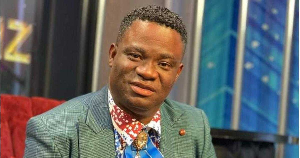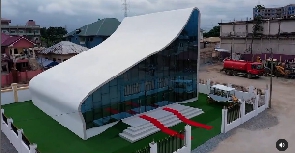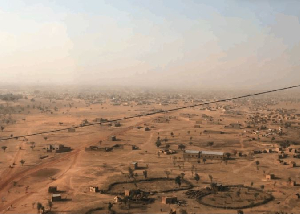A GNA FEATURE BY A.B. ADOM
Accra, Jan. 10, GNA - It is an undeniable fact that the chieftaincy institution has been subjected in severe strain in recent times. This hitherto most revered institution has now come under attack, notwithstanding the fact that the 1992 Fourth Republican Constitution has given it a pride of place.
There have been recent reports of the gunning down of chiefs in connection with land and chieftaincy disputes.
The Constitution defines a chief as "a person, who hailing from the appropriate family and lineage, has been validly nominated; elected or selected and enstooled, enskinned or installed as a Chief or Queenmother in accordance with the relevant customary law and usage". However, these have not been complied with in most cases due to interference. Lack of oral traditions/documents on the rightful successors and the unavailability of registers of all eligible candidates had enabled usurpers to become chiefs.
In some instances stools and skins have been offered to the highest bidders rather than to royalty and most of the chieftaincy disputes could be traced to the infraction of laid down customary procedures. These have been some of the reasons why the institution is losing focus and, therefore, there is the need to revive it to ensure its sustainability.
Whilst it cannot be disputed that some chiefs are performing creditably in the area of socio-economic and cultural development of their districts, some too are not performing so well.
Chiefs wielded enormous authority and respect in the past. Chiefs were widely acclaimed and well respected due to the pivotal roles they played in the socio-political administration of the towns, communities and villages over which they had jurisdiction.
The fact of the matter is that the benefits and the functions of the chieftaincy institution cannot be limited to only traditional norms and values.
It has been suggested that the Chieftaincy institution should adopt Information Communication Technology (ICT) to facilitate the conservation and promotion of cultural artefacts to enhance its market standing on the international market. This, it is envisaged, would ensure free flow of information for mutual benefit.
The role of ICT is, therefore, indispensable in a modern chieftaincy institution. As a matter of fact, many are those whose lives could have been saved if fast communication systems, combined with well-equipped security personnel had been annexed to this institution. Chiefs must have bodyguards to protect lives and property in an emergency situation.
Chiefs in general in a typical Ghanaian domain constitute a symbol of authority, a representative of the people and a conduit for peace and harmony among their subjects. Not to mention its tourist attraction, economic potentials including the role they play in the protection of natural resources such as land, rivers, lakes, streams, forest belts as well as seeking the welfare of their subjects by ensuring equitable allocation of resources such as land for employment generation and a source of income for the youth.
Given the necessary push, the chieftaincy institution could be a major economic driver through cultural festivals; the regalia and even the beautiful architectural designs in the various palaces, some of which are now in a state of disrepair. These beautiful monuments deserve a facelift where tourist could visit and pay a token. One could not discuss these issues without citing the role of the Chief vis-=E0-vis the District Chief Executive (DCEs) and the Assembly members.
Oftentimes there have been instances of lack of co-operation among either the chiefs and the DCEs or the chiefs and the Assembly members resulting from conflict of interest in the discharge of their duties. This lack of mutual cooperation; discrimination; inadequate resources and responsibility shirking have been major setbacks for the chieftaincy institution to thrive.
Truly, the vast differences between the chiefs and their subjects in terms of resource allocation coming from the national level, through the regional to the districts and to the communities before it finally gets to the villages has indeed culminated in the socio-economic conditions of their subjects.
The chieftaincy institution must be devoid of discrimination, especially in the allocation of resources such as land as well as water resources to create jobs for the youth and to ensure the fulfilment of the National Youth Employment Programme (NYEP). There must be appropriate laws for the chieftaincy institution and those laws, which do not help the institution to grow, must be amended so as to enable the chiefs to fulfil their socio-economic roles in society.
Chiefs must live in modesty and avoid corrupt lifestyles. God has blessed this country with rivers, streams, land, manpower resources and ingenuity to make these resources productive.
There must be closer collaboration between the chiefs and civil society organizations; the law courts as well as the security agencies should tackle the large number of litigations pending for trial, some of which are long overdue.
So great could have been the role of chiefs in the mediation process if some chiefs had been exposed to modern principles of management and administration as well as various modes of conflict resolution mechanisms so as to decongest the law courts.
Royalties which are the main sources of revenue for the institution must be paid on time to sustain it; for a nation without a culture is no nation. The indispensability of the chieftaincy institution is should be obvious even to sceptics. It has been propounded in certain quarters that the peace Ghana is enjoying is derived from the fact that traditional institutions are effective and restrain extremism that characterised happenings in some countries in the West African sub-Region.
Opinions of Thursday, 11 January 2007
Columnist: GNA
Survival Of The Chieftaincy Institution Must Be A Shared Responsibility
Entertainment













